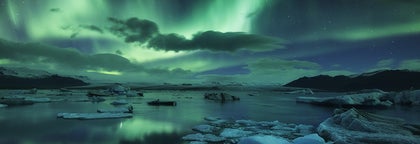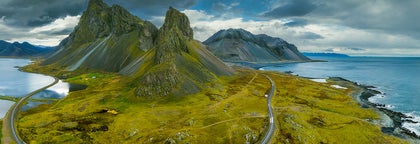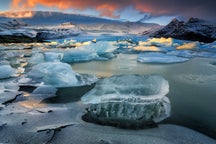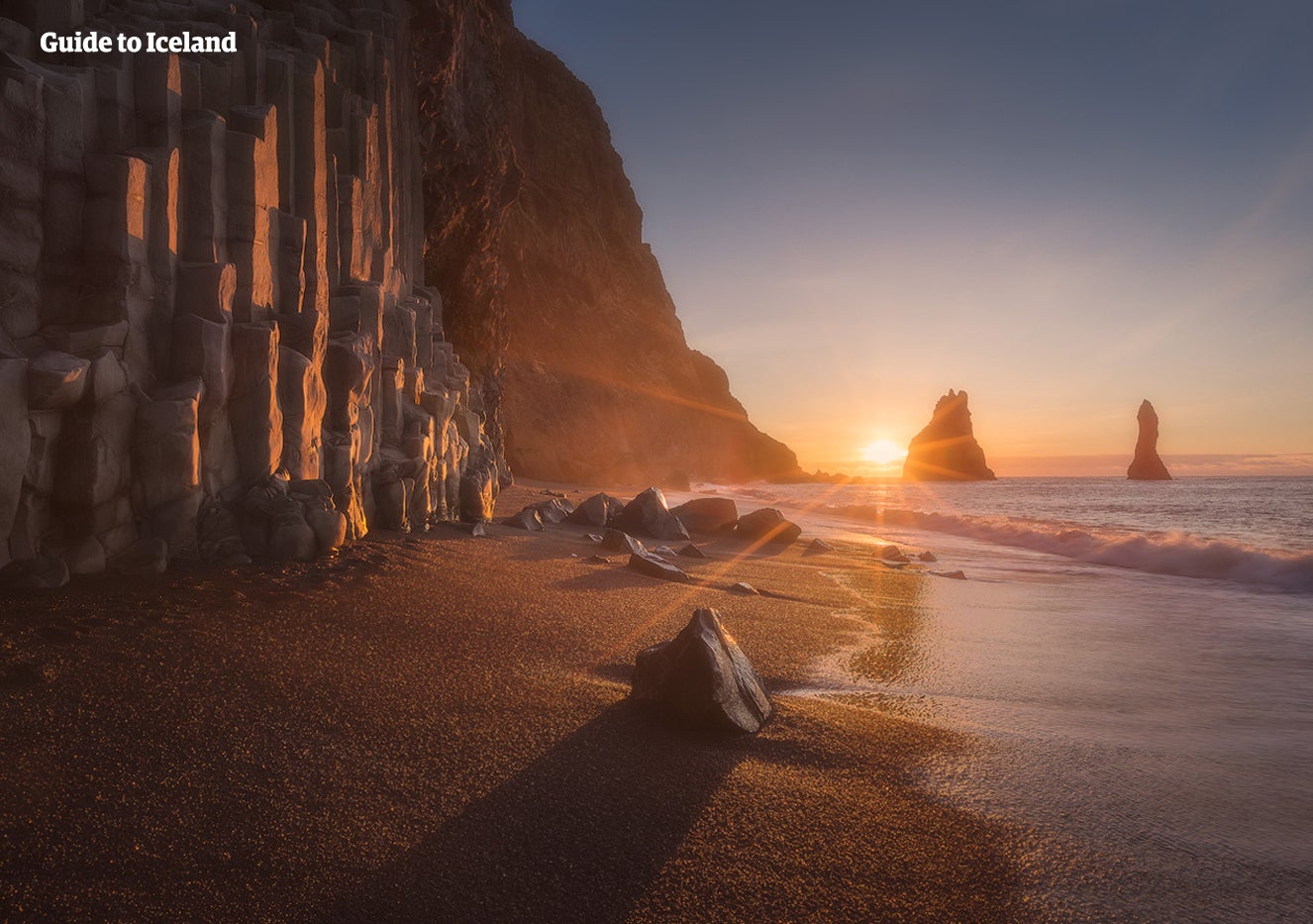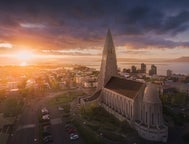
Best Reykjavik Tours — Biggest Selection & Lowest Prices Guaranteed
Discover the best Reykjavik tours in Iceland. Explore the city’s vibrant culture, stunning landscapes, and iconic attractions with guided tours, day trips, unique adventures, and amazing package deals!
Find a unique experience
Select starting location
Select dates
Starting dateFinal date
Add travelers
1 traveler
Not sure where to start? Check out Things to do in Reykjavik
Reykjavik Tours
Refine the results by using the filters
Sort by: Popular
We offer so much more
Explore an unequalled wealth of tours and packages
Frequently asked questions
What are the most popular places to visit in Reykjavik?
The most popular landmarks in Reykjavik include the Tjornin pond, Hallgrimskirkja church, and Harpa Concert Hall. Walking down the main shopping street, Laugavegur, to the Old Harbor is a good way of getting acquainted with the spirit of the Reykjavik city center.
When is the best time to visit Reykjavik?
Reykjavik is a bustling city throughout the year but it's at its most lively in summer, when the main shopping street Laugavegur is closed for car traffic. The pedestrian-friendly street allows for an open and joyful atmosphere, as well as community events throughout the season. The midnight sun also keeps the summer nights bright into the late hours, which makes for a fun evening in the downtown area.
During winter, the days are much shorter, but Reykjavik lights up with Christmas decor all over the city, brightening up the afternoons and evenings. And if you want to see the northern lights in Iceland, winter is the best time to visit.
During winter, the days are much shorter, but Reykjavik lights up with Christmas decor all over the city, brightening up the afternoons and evenings. And if you want to see the northern lights in Iceland, winter is the best time to visit.
How much time should I spend in Reykjavik?
We recommend spending at least one whole day in the capital. If you plan to immerse yourself in the vibrant city life of Reykjavik and give yourself time to visit the various bars and pubs, excellent restaurants, and unique museums, you should at least spend between two and three days in the city of Reykjavik.
What are Reykjavik’s main cultural sites?
Reykjavik is a city that dates back to the 9th century and is now home to a thriving cultural scene. There are many galleries, museums, art displays, architectural landmarks, and historical sites where you can learn more about the culture of Iceland. Take a culture tour to immerse yourself in Iceland's unique heritage and rich history.
Can I see the northern lights in Reykjavik?
With clear skies and high aurora activity, you can see the northern lights in Reykjavik. Nevertheless, because of the light pollution from the city's street lights and houses, Reykjavik is not an ideal location to see the aurora borealis in all its glory. Sites such as the Grotta lighthouse and some of the city parks are sometimes dark enough for a good display within the city limits. However, the best way to see the aurora is to venture out into the countryside. Northern lights tours are the best way to find the aurora, and many bus, boat, and jeep tours depart from Reykjavik. As the northern lights are a natural phenomenon, keep in mind that sightings can't be guaranteed and sometimes you need a little luck to catch them.
Which activities can I partake in if I'm based in Reykjavik?
Numerous tours have a pick up location at one of the bus stops in Reykjavík so there is never a shortage of options. You can choose from a variety of activities, ranging from glacier hikes and whale watching excursions, to horse riding tours and helicopter adventures.
How close is Reykjavik to major natural attractions?
One can easily take a day tour from Reykjavik exploring the Golden Circle sightseeing route, Iceland's South Coast, or the Snaefellsnes peninsula. If you rent a car in Iceland, it's very easy to spend the day exploring the countryside and be back in Reykjavik in time for dinner.
What is the best way to sightsee in Reykjavik?
There's a variety of sightseeing tours available in Reykjavik for you to try. You can on a guided walking tour of Reykjavik's historic and cultural landmarks, or explore the city on a double-decker bus tour. For something a little different, try an electric scooter sightseeing tour of the city, and for the most adventurous, there's even a helicopter tour of Reykjavik's cityscape with a landing at a nearby mountain summit.
What are the best swimming pools in Reykjavik?
There are 18 swimming pools in the greater Reykjavik area. Laugardalslaug is Reykjavik's largest and most popular swimming pool. In the city center, you can find the historic Sundhollin swimming pool which opened in 1937. About a 15-minute drive from the city center, you can visit the luxurious Sky Lagoon. Reykjavik is also the departure point for many tours and bus-transfers to the famous Blue Lagoon Spa on the Reykjanes peninsula.
Do I need to book accommodation in Reykjavik in advance?
We recommend that you book accommodation in Reykjavik ahead of time to guarantee the best rooms and rates. Although the city is brimming with hotels, hostels, and guesthouses, they are often fully booked, especially at peak times.
What is the best time of year to take a tour in Reykjavik?
The best time of year to take a tour in Reykjavik depends on the specific tour and what you want to see or do. Summer months are popular for outdoor activities like hiking and sightseeing, while winter months offer opportunities for viewing the northern lights and engaging in winter sports.
How far is Reykjavik from Keflavik International Airport?
It takes around 45 minutes to drive from Reykjavik to Keflavik International Airport. There are many airport transfers available that can either pick you up or drop you off at the airport via bus, minibus, or private vehicle at your convenience. Some Reykjavik airport transfers include a visit to the Blue Lagoon, so you won't miss out on this unforgettable landmark during your stay in Iceland.
Can I fly from Reykjavik to other towns?
Yes, near the city center is the Reykjavik Domestic Airport which has regular flights to Akureyri in the north, Egilsstadir in the east, and Isafjordur in the Westfjords of Iceland.
How many people live in Reykjavik, Iceland?
The city of Reykjavik is home to approximately 125,000 people, while the greater capital area has a population of around 220,000 (about two-thirds of Iceland's entire population).
What family-friendly activities are popular in Reykjavik?
Reykjavik is a very family-friendly city, with lots to do for both older kids and younger children. With 18 swimming pools, a wide variety of museums, and a petting zoo with unique Icelandic animals, there are plenty of activities suitable for children all around town.
What are some popular tours to take in Reykjavik?
There are several popular tours that depart from Reykjavik, including Golden Circle tours, Blue Lagoon tours, and South Coast tours. Other popular tours include the Reykjavik Food Walk, the Reykjavik Whale Watching tour, and the Small Group Snaefellsnes Peninsula tour.
How long are the tours in Reykjavik?
The length of tours can vary depending on the type of tour and the company offering it. City walking tours may last 2–3 hours, while longer excursions like glacier hikes or day trips to nearby attractions may last 8–10 hours.
Do I need to book a tour in Reykjavik in advance?
It is recommended to book tours in advance, especially during the peak season (June to August). Many tours sell out quickly, so booking in advance ensures availability.
Is it necessary to tip tour guides in Reykjavik?
Tipping tour guides is not expected in Reykjavik, but it is not frowned upon either if you enjoyed the tour and the service provided. The amount of the tip is at the discretion of the customer.
Can I cancel or modify my tour reservation in Reykjavik?
Cancellation and modification policies vary between tour operators in Reykjavik, but most have some form of cancellation or modification policy. It is recommended to check with the tour operator for their policies before making a reservation. If you have any questions, you can also contact us at info@guidetoiceland.is.

Install Iceland’s biggest travel app
Download Iceland’s biggest travel marketplace to your phone to manage your entire trip in one place
Scan this QR code with your phone camera and press the link that appears to add Iceland’s biggest travel marketplace into your pocket. Enter your phone number or email address to receive an SMS or email with the download link.

























